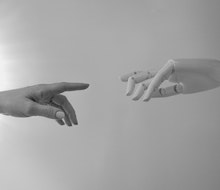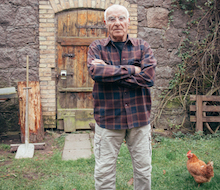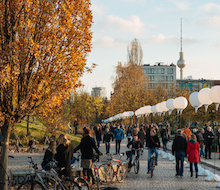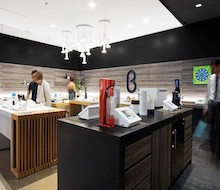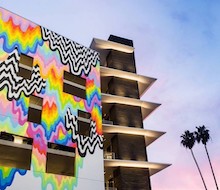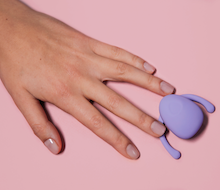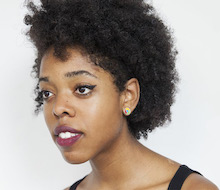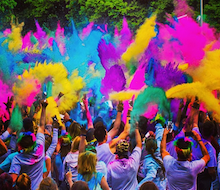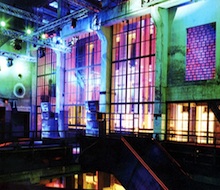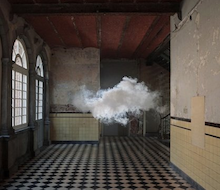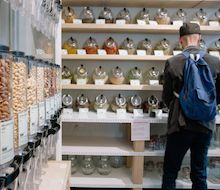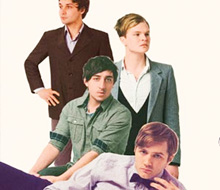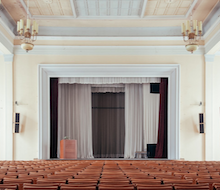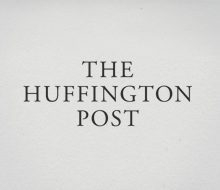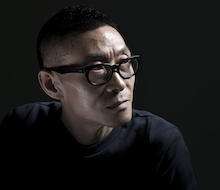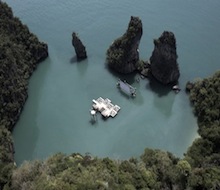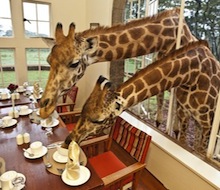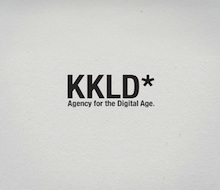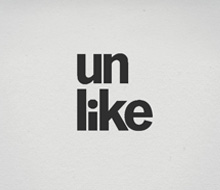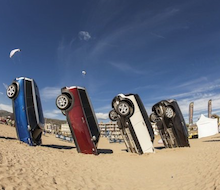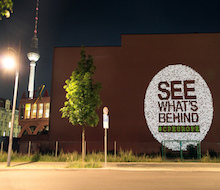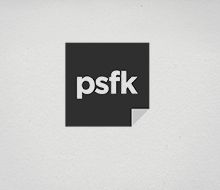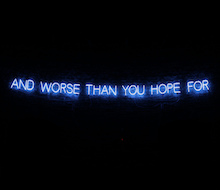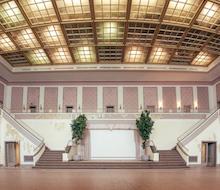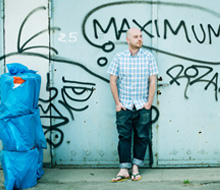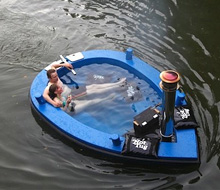Timo Rissanen discusses how we need to rethink the industry in the context of how it directly impacts and is impacted by the world outside of fashion
If any industry is in desperate need of a makeover (one that could give Andy from The Devil Wears Prada a run for her money), it’s fashion. An industry that is supposed to be at the forefront of design—paving the way for designers across all industries when it comes to manufacturing sustainable products—is needing to be tailored at the hem to fit the demands of modern society.
Parsons’ Assistant Professor of Fashion Design and Sustainability Timo Rissanen believes revolutionizing the fashion industry starts with educating the next generation of fashion designers. According to him, the new breed needs to be trained to work with economists, collaborate with climate scientists, and be literate in history, economics, anthropology and science. Collectively, they need to have this capacity so they can actively engage in this redesign of both fashion and society. After all, the crises that fashion is facing is not solely a symptom of a fashion problem, as the world outside of fashion is directly relevant to whatever is happening in fashion.
For PSFK’s recently launched Fashion Debrief, I sat down with Timo to discuss why we need to rethink the function of fashion design in the 21st century.
PSFK: You said in your “One Court” magazine essay, “What is Fashion Good For?” that a fashion system that enriches humanity is a task for us all. How do you personally think fashion can be used to enrich our everyday lived experience and improve an individual’s quality of life?
Timo: I think that the thing that is perhaps missing a lot of the time is that we’re not designing clothes intentionally to fulfill a variety of needs that people have. A lot of the time brands are primarily designing and producing clothing from the perspective of what’s going to sell. Of course that is important because a company needs to survive, but I do think that there’s an opportunity for a lot more. Companies could be more successful if they actually thought to identify the needs that people use clothing to fulfill.
Ffora is company founded by a Parsons graduate, Lucy Jones. For the last three years of her studies, her research focused on designing clothing for people with disabilities where the clothing is still just as beautiful as clothing designed for anyone else.
There are countless opportunities when you actually start to hone in on the different niche markets. Technology can also help when it comes to finding out what it is that people need. We need to start asking questions like, “What could be the functions of fashion design in the 21st century?”
Between 2012 and 2014, you worked with a professor called Kate Fletcher on a project called Local Wisdom where you investigated how individuals got satisfaction from clothing through inventive and intensive use instead of just shopping for new clothes. What were some of your findings through this project?
One almost immediate outcome for us was that, as an educational institution, we hadn’t really framed fashion design as user centered design. Now, almost four years later, it’s quite ordinary for us to set up design briefs for our students where they have to do user research. That was perhaps one of the most fundamental findings—that fashion can and probably should do a lot more user research alongside the more traditional market research that it has done for years.
For example, asking questions like: what is it that brings joy to people when they wear clothing? I remember some stories where clothing didn’t only act as a facilitator for relationships between complete strangers, but also connect relationships within families. . We found four women spanning three generations in one family who all shared the same dress. One woman would have it at a time. Once they felt that they’d got enough wear out of it, they would mail it to the next woman, and the next woman, and so forth. Clothing does have an amazing capacity or potential to facilitate relationships between people.
My research now is more centered on building on local wisdom, so I’m looking at the work of a Chilean economist, Manfred Max-Neef, who developed his idea of fundamental human needs 30 years ago. I do think that his work could be used more than it has, not just in fashion design but in design across the board.
There’s nine fundamental human needs and they are universal across humanity, regardless of culture, time and social status. However, how these needs are are fulfilled varies. The question that I’m interested in the most is: how can fashion and fashion design better and more intentionally fulfill those nine fundamental human needs? A single garment cannot fulfill all nine needs at the same time and it doesn’t need to. However, I do think that there’s a huge opportunity in the fashion to start asking questions about how might we, as an industry and as a system, work more effectively to fulfill those needs instead of using consumption as a proxy to fulfill those needs.
For example, one of the fundamental human needs is creation—the need to create. Customizing or repairing existing clothes or making your own clothes might be a more effective way of fulfilling that need.
Also, there’s an interesting book that came out maybe two months ago called, “Folk Fashion” by Amy Twigger Holroyd in the UK. It’s based on her PhD research which focused on making and altering clothes at home, specifically knitwear where you can actually unravel the garment and reknit it into a completely new one. It was really rich insight into how people get this immense satisfaction out of fashion not just through shopping for more stuff but actually being actively engaged with fashion with their very own hands.
You’ve also said that fashion’s drive for incessant change has caused many of its problems and yet its capacity for renewal is one of its greatest strengths. Can you elaborate a bit more on what you meant by this?
On the one hand, technology is evolving at a rapid pace which creates some challenges but also a lot of opportunity. I think fashion is one field where change has always been inherent and has a more resilient capability in the face of change. With climate change alone, it’s very difficult to predict what the next 50 or 100 years might look like, but I think fashion has a capacity to embrace change and alleviate some of the anxiety.
Fashion is a business of future making. Much of a fashion designer’s work is focused on the two or three years that follow. Sustainability is also about the future but over a longer span of time than that. On that note, what do you think the global fashion industry will look like in, say, a decade from now?
That is the kind of question that we need to be asking more because so much of our culture today, especially in politics, is focused on very short term thinking. Political terms vary from three to six years. Of course, it’s necessary to deal with many things in the short term, but it shouldn’t be at the expense of long term thinking. I do think that we are at a critical point where we need to plan for the next 100 or 500 years. It’s really difficult because on an individual level very few of us will be around in 100 years and at least with current technology, none of us will be around 500 years from now! (Laughs)
I just started a project a few months ago in Australia where I was asking people. “What message would you like to say to people 100 years from now?” Many people found the question quite confronting because it delved into what legacy they would like to leave behind collectively and how they want future generations to remember us.
Even for business, I believe that question should always be in the back of business leaders’ minds. Elon Musk is a great example of someone who’s paving the way forward in this respect. I genuinely think that there’s a drive in him to make sure that the generations that come after us still have as good of a chance of flourishing as we’ve had, if not better, despite the fact that right now we’re actually facing a very uncertain future.
Did you see the article in New York Magazine in July, which became the most read article in the magazine’s history? I do think that they did a good thing by publishing it, but I also think it’s important to focus on solutions because otherwise it’s just paralyzing for people. People like Musk are the kinds of people that can constantly point to and say, “Change actually is possible.”
I’ve actually got a more academic article in front of me right now that I’m referring to in one of my classes next week that paints the broad strokes of a roadmap for decarbonization for the next 100 years. Those are the kinds of visions that we need to bring into the business world, as well as the fashion world. We need to start thinking of time in terms of layers. In Stuart Brand’s book “The Clock of the Long Now,” he talks about time having these different layers. Fashion and art the fastest layer out of seven different layers; nature being the slowest, and culture and infrastructure in the middle. The point is that all of them are necessary, but right now, the fastest moving layers—fashion and art and commerce—tend to dominate at the expense of slower speeds. We need to bring balance to that.
What should consumers be looking for when building a wardrobe and how they should reduce post-consumer waste?
We need to be asking honest questions about ourselves and what we really need in order to live a great life. Certainly, in a place like the United States, we could all do with less stuff in our lives and still lead a fulfilling life, if not a more fulfilling life.
What is the best way to educate consumers about waste and the consequences of fast fashion?
Based on the experiences that I’ve had, I think that often telling positive stories and highlighting the positive examples tends to be more effective and inspiring for people than purely focusing on the problems alone. I’m almost surprised to hear myself say that because in my teaching over the last 15 years, I’ve primarily focused on the problems. In that time, I’ve also found that I end up with a classroom of young people who are left paralyzed. Then that’s where the real work begins. What are we going to do with all of these challenges? I do think that there’s immense power and opportunity for companies to highlight the positives of what’s being done to make change happen.
One company that comes to mind is Eileen Fisher here in New York, with the Fisher-found initiative that they’ve built from the Green Eileen initiative that they first launched in 2009. Essentially, they’ve been collecting old Eileen Fisher garments from their customers and remade the ones they can’t resell into new garments by literally cutting them up and designing them from scratch. They actually have a dedicated designer doing that. It’s still quite labor intensive but they are using a number of different technologies to facilitate that process. I think there’s an opportunity there for other fashion businesses to learn from what they have been able to accomplish.
Another really interesting point that you’ve made is that new business opportunities arise when we begin thinking of fashion as a range of services as well as a range of products. You gave an example that Patagonia now employs more than 40 people just to do repairs. Could you also shed light on what you meant by this transition from products to services?
One of the immediate examples that comes to mind is Rent the Runway where the company is no longer selling the product itself, but the wearing of the garment. They’re leasing garments out. In the context of fashion, it’s still a fairly new thing. One of the things to be cautious of, however, is that it could also inadvertently encourage more consumption. Nonetheless, rentals have huge potential for certain garment categories. Particularly companies who might have a professional need to have a high turnover of clothing. Rentals might be a more economic way to deal with that than constantly buying new clothes.
I remember speaking with Nudie Jeans over a year ago who have a repair service. Initially they worried that repairing items would mean they would run the risk of stopping that customer from buying new garments from then. Howeever, what they found is that the repair serviceled to increased brand loyalty among their existing customers, and that often when people bring in the jeans for repair, they don’t come alone. This led to being introduced to new customers.
Patagonia’s repair service has been growing ever since it was introduced. I think other companies in fashion could explore the idea of service alongside their products and services that might be sold together with products. I do think that that’s going to be a larger area for fashion in the near future.
What do you think still needs to be done to bridge the gap for some people to see the opportunity in wearable tech as being more than just a gimmick but something that can add true value to their lives?
User research is absolutely crucial in wearable tech so that the new technology can actually directly and effectively fulfill a particular need. Weable tech is especially valuable to certain niche markets. In health, there’s huge opportunities for tech to monitor health conditions with embedded electronics. Sport is another market, where runners can know their heart rate and vitals while they are running, The leap from different gadgets actually being embedded in their clothing doesn’t seem a huge leap to me.
Fashion designers have always had a leadership role within the fashion industry. What is your view on fashion trends being dictated by big data these days and crowd-sourced, as opposed to being driven by a designer’s vision?
That’s an excellent question. With user research playing a bigger role in fashion, I think the kind of hierarchical relationship that fashion designers have historically had with the users of their product—the idea that fashion designers solely dictate what people wear—is changing. The fashion designer model was established back in the 1860s and it’s only started to challenged slowly over the last few decades. Still, that model still dominates. Even the way fashion is presented in the runway shows, it’s still communicated as, “This is what people should be wearing, and this is the way they should be wearing it.”
As we start to engage more with user satisfaction, I think that balance of the relationship between the designer and the user will shift. I don’t necessarily think it’s a bad thing, but I do also understand that for some designers it’s a source of anxiety.
Open Style Lab, which was founded by my colleague, Grace Jun, has been running for two years now, enabling designers from different disciplines to collaborate with one another. Each of the teams always includes at least that one fashion designer, and they work with a client, who is someone with a specific disability.
I’ve spoken with several of the design students who participated in Open Style Lab over the last year and a half. They find it incredibly satisfying, so I do think it presents an opportunity to really ask: what is the role of the fashion designer in the 21st century?
I am optimistic about it, but at the same time, I do still think that designers are well trained to make decisions about aesthetics and particularly experienced designers tend to have a very good eye for proportions and what actually flatters a particular individual.
How do you think the fashion consumer of today has changed the most in comparison to the consumer of a few decades ago? What makes them tick, and what are they seeking?
There’s some re-calibrating and re-educating that really needs to take place to change people’s mindsets about the relationship between price and quality. The biggest side effects of fast fashion over the last two decades has been that we’ve lost sense of what is good quality when it comes to fabrics and manufacturing. We’ve also lost touch with how much it actually costs to make things, because things are cheaper than should be, if you think about the fundamental human needs of everyone in the fashion system, including the people who generate the fibers and actually make the clothes that we wear.
That’s not to say that more expensive apparel is automatically better. I think that technology will prevent things from becoming too expensive moving forward, because of advancements in automation. Of course, that then raises a whole lot of other questions about labor and employment. That’s where there’s another opportunity for re-educating.
When I look back at the 15 years that I’ve been working in fashion and sustainability, there is definitely more awareness among consumers about fashion’s impact on the world, where people are asking the question:”How can I make a difference as a consumer?” That said, we could do a much better job of providing high quality information to people. This isn’t just limited to fashion. A lot of people are asking the same question about food and automotive. Across the board, there is a more conscious and aware consumer than there was 20 years ago.




